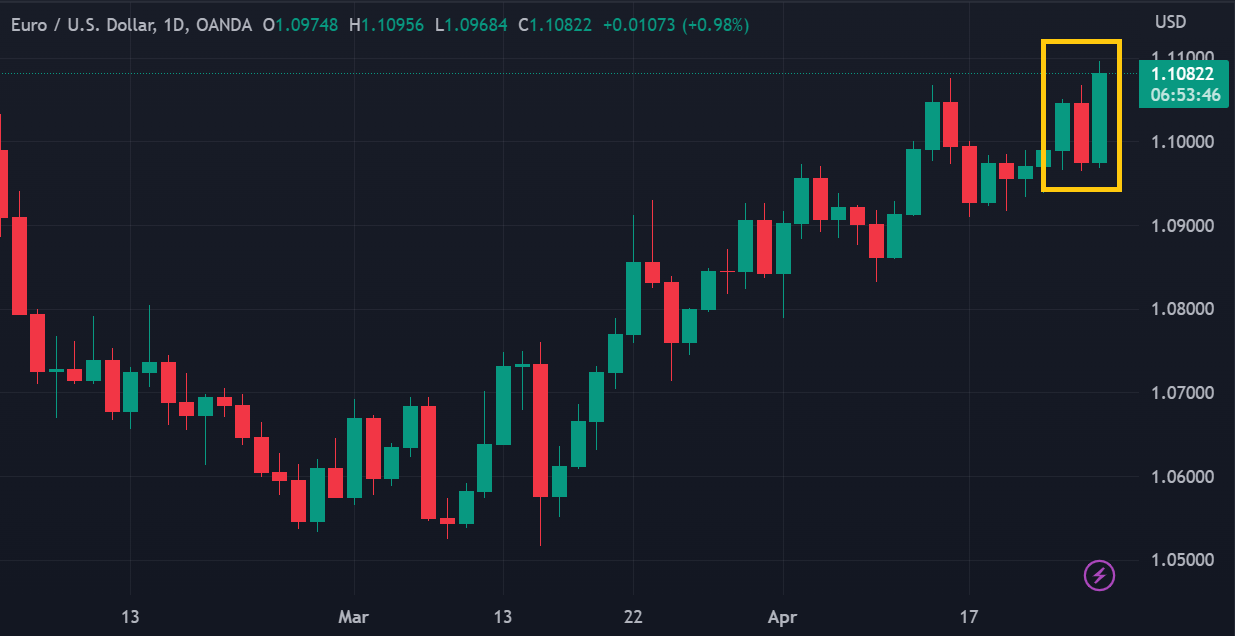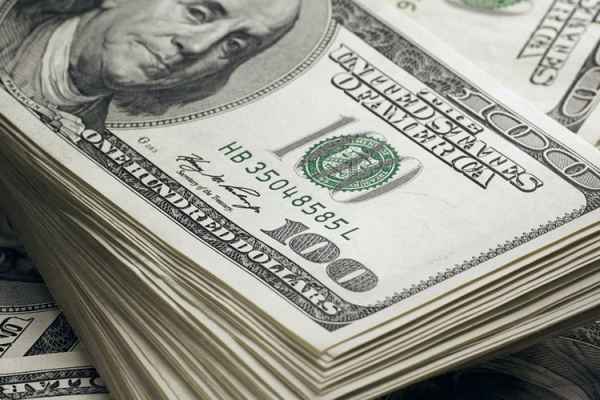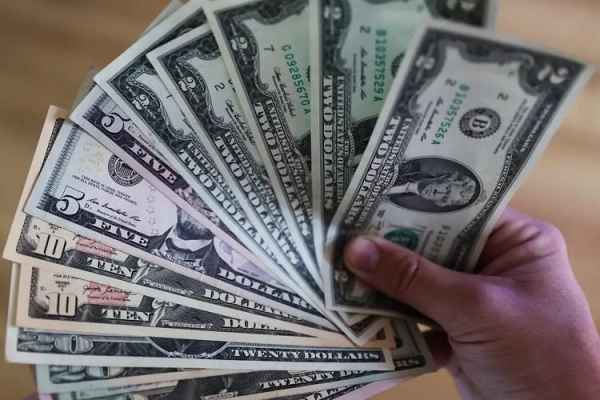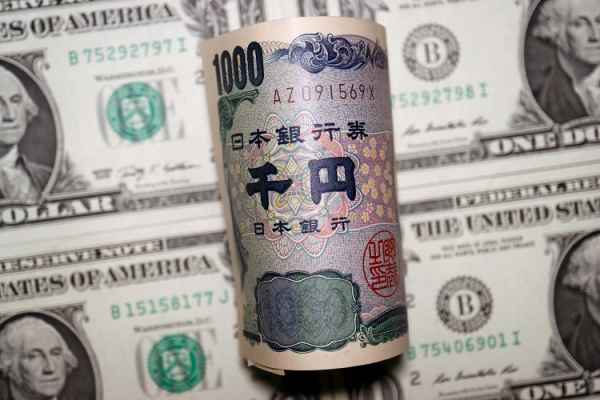Market sentiment improved, causing traders to sell off safe-haven assets and return to buying rival currencies to the US dollar.
The US Dollar Index (DXY) fell back to around 101.00 in Wednesday's (April 26) trading after briefly climbing on Tuesday. Market sentiment improved, causing traders to sell off safe-haven assets and buy up rival currencies to the dollar. The EUR/USD duo showed the best performance in the major arena, with a gain of around 1% to touch 1.1095, its highest level in the past year.
 EUR/USD Daily chart via TradingView
EUR/USD Daily chart via TradingView
Previously, market participants were worried due to negative news about First Republic Bank in the United States, causing them to sell high-risk assets and accumulate safe-havens. However, further investigation of the news showed that the potential impact was limited and had no systemic effect on the US banking system.
"The broader spillover impact looks limited - other regional bank shares have held up better - and the market sees it as an isolated incident. That's why we've seen a bit of a bounce in risk assets and the dollar giving back some of yesterday's gains," said Lee Hardman senior currency analyst at MUFG.
Change in the direction of the US dollar's movement tends to benefit the euro and sterling amid the absence of new data from the Eurozone and the UK today. While EUR/USD rose around 1%, GBP/USD recovered all its losses from yesterday and approached the necessary resistance threshold at 1.2500.
Francesco Pesole, FX strategy expert at ING, said, "The euro and pound continue to move in tandem without a clear driver to justify the divergence between the two currencies at present, as most of the news is coming from the US and the dollar side."
The release of the latest economic report from the US tonight also supported the improvement of market sentiment. The Durable Goods Orders data recorded a rise of +3.2% (month-over-month) in March 2023. The figure reversed the previous period's decline of -1.2% and also exceeded the consensus estimate of +0.7%. This reflects that the US economy is still quite resilient despite some sectors experiencing setbacks due to high inflation and interest rates.

 Dedicated FREE FOREX VPS
Dedicated FREE FOREX VPS Free FOREX Virtual Private Server
Free FOREX Virtual Private Server MT4 Demo Contest, Get $500
MT4 Demo Contest, Get $500 Sign Up for an Account, Claim 60% Deposit Bonus
Sign Up for an Account, Claim 60% Deposit Bonus Free MT4/MT5 VPS 2024
Free MT4/MT5 VPS 2024 Send E-mail and Get Free Merchandise
Send E-mail and Get Free Merchandise $1K Refer a Friend Bonus for Pepperstone Pro clients
$1K Refer a Friend Bonus for Pepperstone Pro clients Maximize Your Earnings with 100% Deposit bonus
Maximize Your Earnings with 100% Deposit bonus Trade to Win, $5,000 Monthly Demo Contest
Trade to Win, $5,000 Monthly Demo Contest Claim 30% + 15% Deposit Bonus from LiteFinance
Claim 30% + 15% Deposit Bonus from LiteFinance






